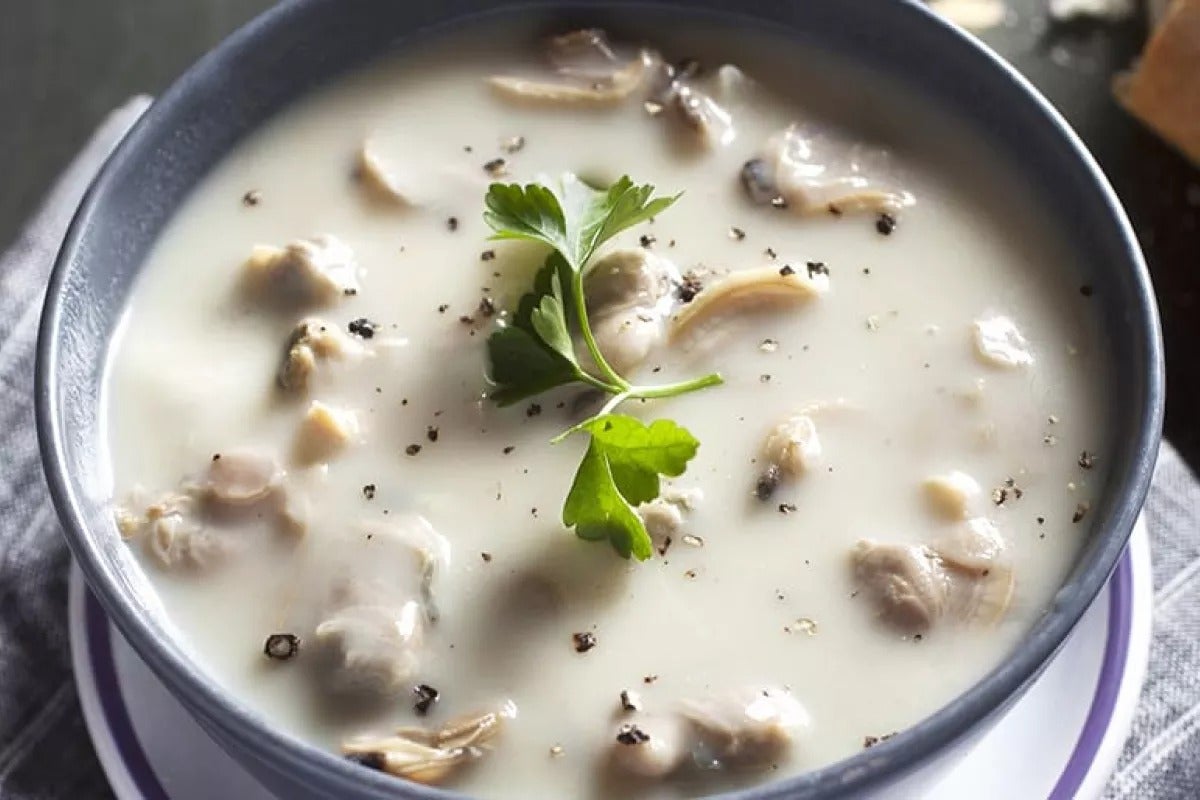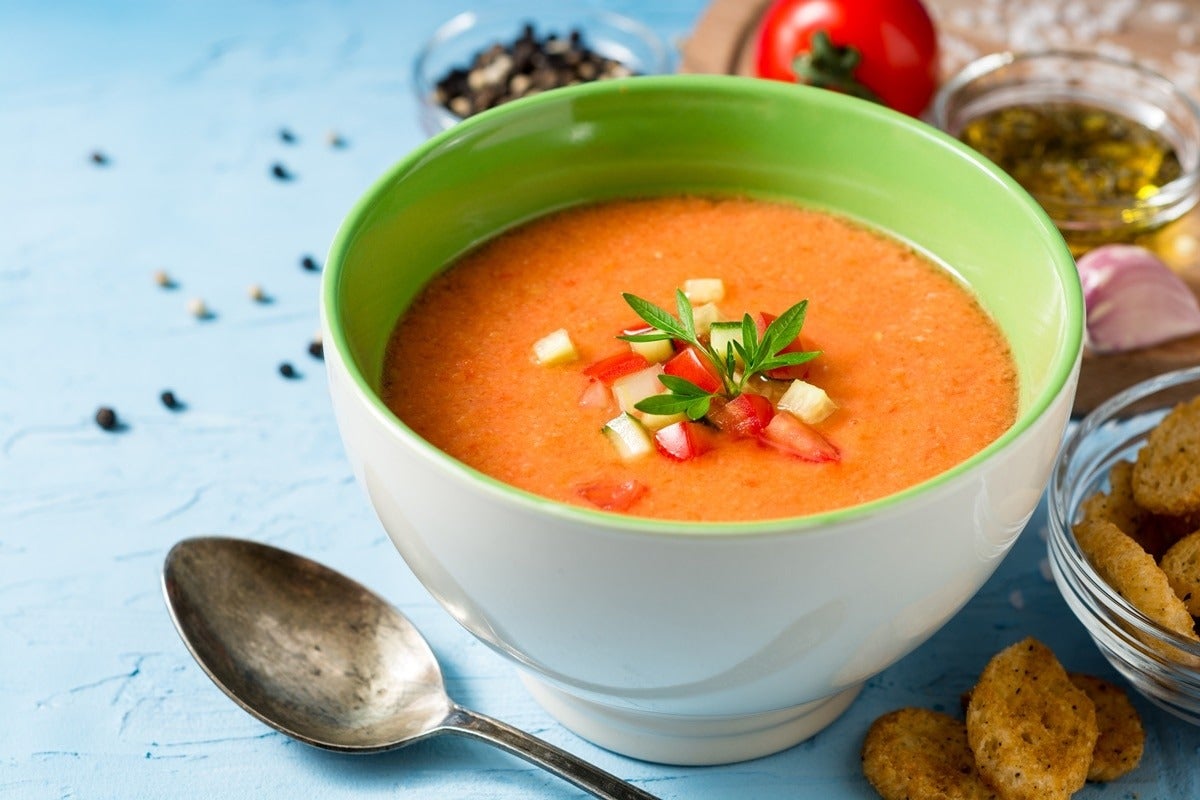If you’ve ever wondered what the difference between soup and chowder is, then read on. In our helpful article and guide, we’ll clear up the differences once and for all so you leave ready and equipped to be able to tell the variations between your soups and your stews. We’ll help you to understand what a chowder is and what truly sets it apart from its soup cousins. A delicious, classic, comfort food dish, learn more about the history of chowder and soups from around the world below.

© Shutterstock
What's the difference between chowder and soup?

In simple terms, chowder soup is a rich and creamy dish, often made with clams, seafood, and potatoes. In its very basic format chowder is a soup made with a base of broth and thickened cream. You’ll regularly find chowders served alongside crackers or biscuits too. In terms of the word’s etymology, 'chowder' is thought to be derived from the large pot the French would use to cook their stews and the Latin word 'calderia' which literally meant a place to warm things. Chowder can also be traced back to the fishing villages along the coast of France from Bordeaux to Brittany, where every village had a large 'chaudiere' waiting for the catches from the ships returning from the sea. These dishes would be enjoyed by the village communities as a welcoming celebration for the ships’ safe return.
Given the recipe’s origin from the French coast, other seafood ingredients like lobster, crab, and smoked salmon commonly appear in chowders, with seafood chowders most typically found now in New England. The New England clam chowder is a particularly famous dish, recognised for making the most of the ingredients in the area. Deeper into the Southern states, you can find chowders with Mexican influence, often made with corn. Equally, chowder does not need to contain meat and seafood to be called a chowder. Vegetarian chowders are widely available, with ingredients such as potatoes, parsnips, or winter squash used in popular recipes. It’s a hearty, welcoming dish that has its origins in bringing people together over warming, tasty ingredients.
What is soup?

Regarding the definition for soup, it’s a much wider used term than that of chowder. Simply put, it’s any type of food that’s cooked in a liquid from water to meat or vegetable broths, milk, or even liquids like wine. Soup can take its form in cold or warm varieties. Gazpacho, for example, is technically a soup, and is enjoyed cold. It’s made from a host of Mediterranean vegetables blended with ice, traditionally found in the Andalusian region of Spain. Soup can also be chunky or smooth, clear or thick, and be served with toppings from croutons to bacon. As it’s a catch-all term for ingredients cooked in liquid, the definition is far more vague than chowder’s history. And the lines are often blurred between other types of liquid-based dishes. For example, stew is another subcategory of soup, and really refers to any ingredients that have been stewed through submerging into a liquid.
Soup can take many different formats depending on where you are in the world. Though you might not think it, Vietnamese pho and miso soup from Japan are both types of soup, falling into this category. In Europe, traditional Eastern European dishes, like borscht, are counted under the umbrella category of soup, made with a beetroot base and served with a side helping of cream or yogurt.
Difference between soup and chowder
Close cousins, the difference between soup and chowder is fairly nuanced. Soups can be thin, light, and clear, whereas chowders will always be rich, thick, and undeniably creamy. Chowder will also always be served chunky, with cubes of meat, seafood, or vegetables mixed into the liquid. Whilst soup can be found in a cold format, like gazpacho mentioned above, chowder will always be served warm or piping hot. Ultimately though, whilst chowder is technically a soup, there are still a couple of differences when comparing chowder vs cream soup. Cream soup, or bisque, is incredibly smooth and infused with seafood or vegetable flavors, which are then blended with cream. Whereas chowder is made with fresh ingredients and, as noted previously, contains chunks of the main ingredient.








